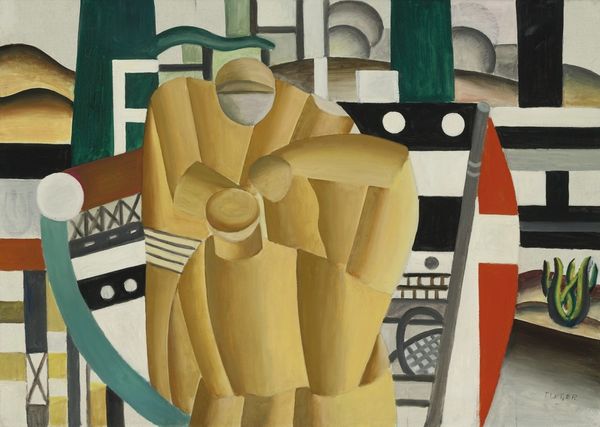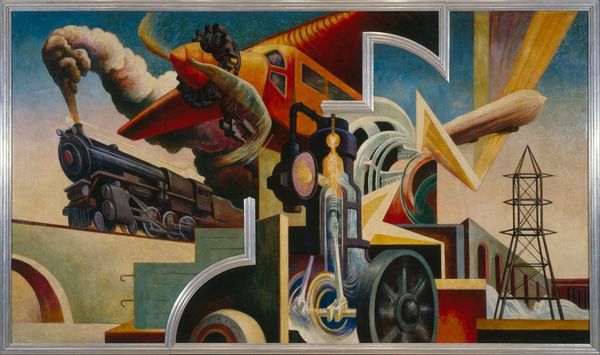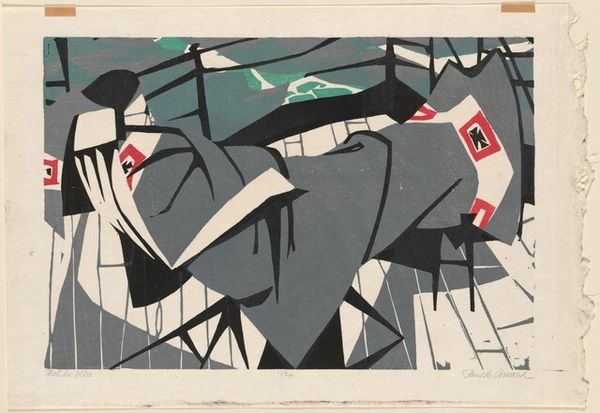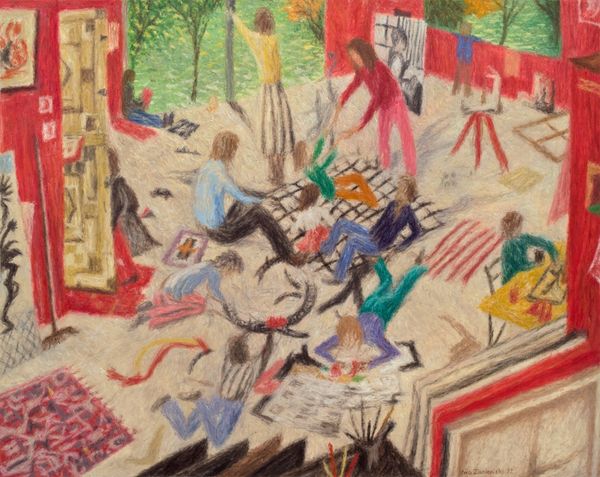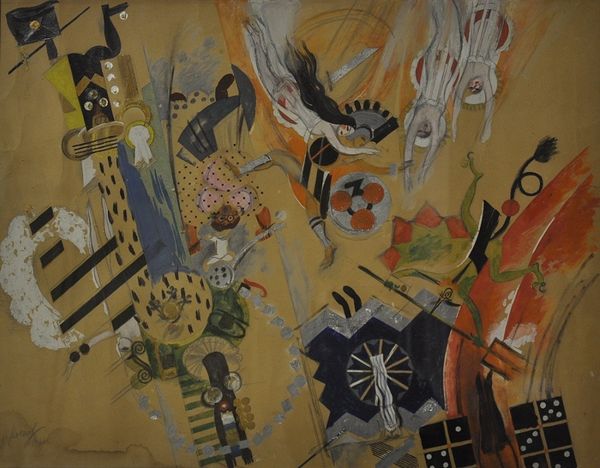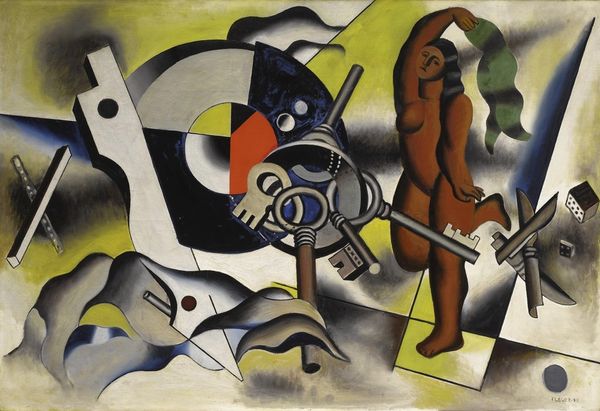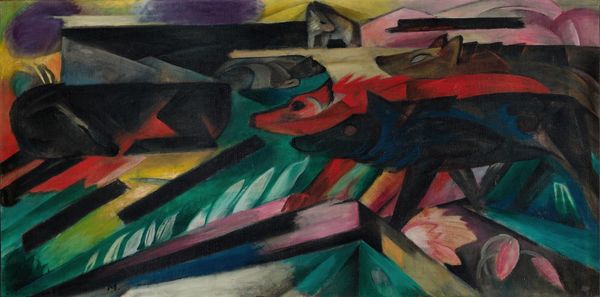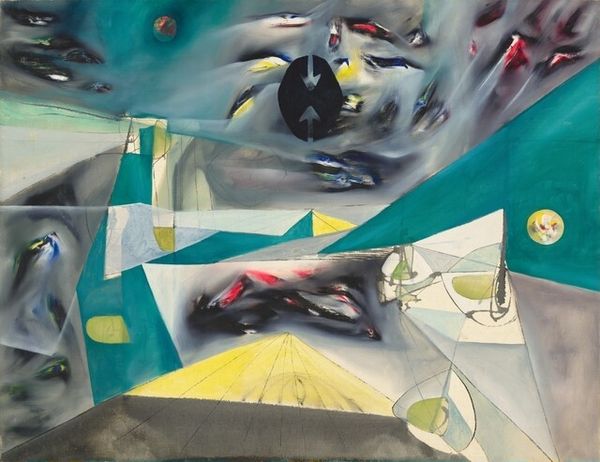
painting, oil-paint
#
portrait
#
painting
#
oil-paint
#
figuration
#
oil painting
#
group-portraits
#
genre-painting
#
italian-renaissance
#
portrait art
#
modernism
Copyright: Renato Guttuso,Fair Use
Curator: Well, what a provocative visual arrangement! A very assertive color palette as well. Editor: Indeed! Today, we’re observing Renato Guttuso’s “Tre operai e una prostituta”, created in 1979 using oil paint. Guttuso offers an arresting social commentary, don't you agree? Curator: Social commentary for sure. But, what draws me first, as always, is the compositional arrangement. The contrast between the dismembered car parts and the figures is startling, isn't it? The lines of the metal clash wonderfully with the softness of human figures. Editor: I would agree, but more pointedly the materials! Guttuso masterfully positions three laborers and a sex worker amidst scrap metal. He captures the reality of marginal existence while posing critical questions about labor, gender, and value in contemporary society. Curator: You can certainly interpret the content in that way. For me, I think the artist's use of chiaroscuro adds such visual tension! The forms in shadow versus the light shapes produce almost a melodramatic effect on the subject matter, despite the muted colors overall. Editor: You see that visual drama. I look instead at the literal, industrial production cast against the background of historical Roman aqueducts, questioning notions of labor and the commodification of human existence. Curator: Interesting juxtaposition for sure. I see those background shapes more simply, as forms that offer counterpoint. Ultimately, it’s the dynamism and complexity of the human arrangements and forms themselves that truly arrest attention here. It challenges our understanding of form and beauty in a surprisingly gritty manner. Editor: Yes, but do those forms then invite a contemplation of labor relations and power structures implicit within artistic representation? I contend Guttuso asks, "Who profits from whose work?” Even a question that dates back to Renaissance masters is being reworked here. Curator: Fair enough, a valid observation, even from a materialist view. Editor: As always, a formalist lens brings light to those structural considerations which support sociohistorical readings.
Comments
No comments
Be the first to comment and join the conversation on the ultimate creative platform.


